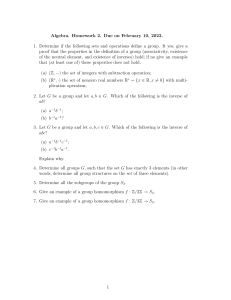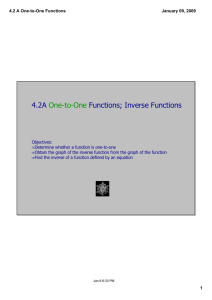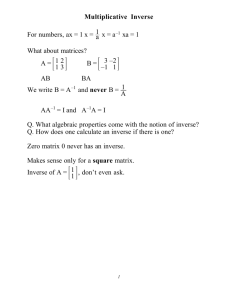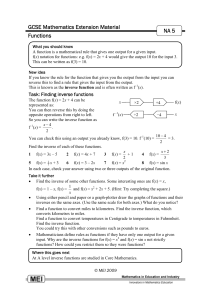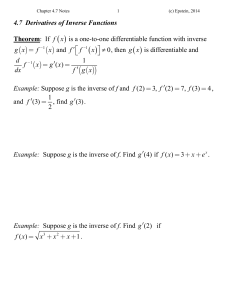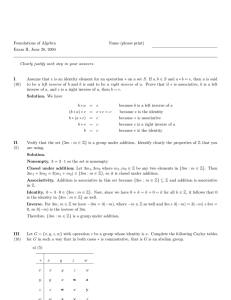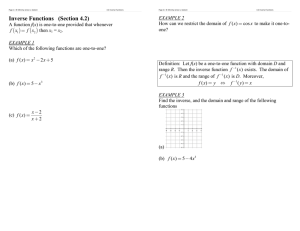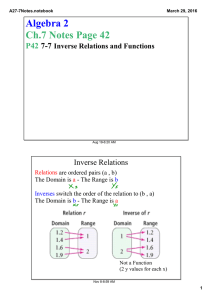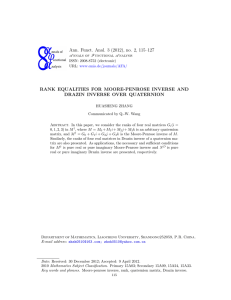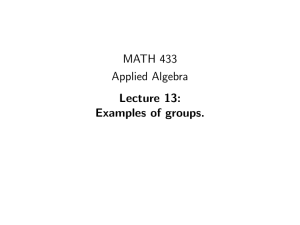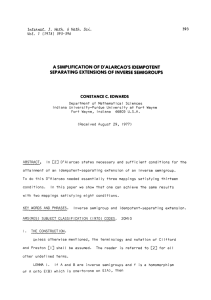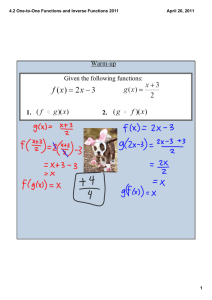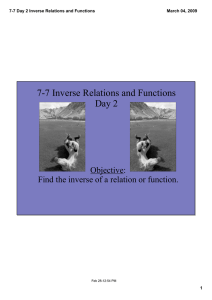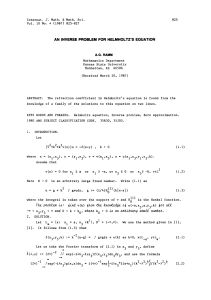ex1214-2-solution March 15, 2015
advertisement
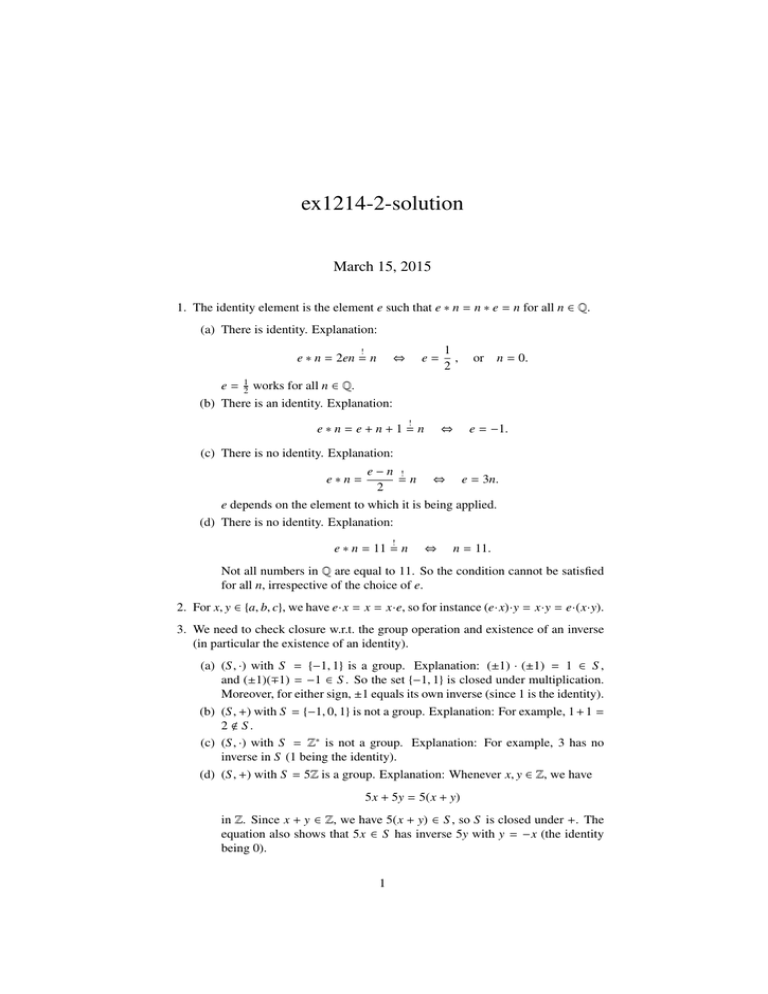
ex1214-2-solution
March 15, 2015
1. The identity element is the element e such that e ∗ n = n ∗ e = n for all n ∈ Q.
(a) There is identity. Explanation:
!
e ∗ n = 2en = n
e=
⇔
1
,
2
or
n = 0.
e = 12 works for all n ∈ Q.
(b) There is an identity. Explanation:
!
e∗n=e+n+1=n
e = −1.
⇔
(c) There is no identity. Explanation:
e−n !
= n ⇔ e = 3n.
2
e depends on the element to which it is being applied.
(d) There is no identity. Explanation:
e∗n=
!
e ∗ n = 11 = n
⇔
n = 11.
Not all numbers in Q are equal to 11. So the condition cannot be satisfied
for all n, irrespective of the choice of e.
2. For x, y ∈ {a, b, c}, we have e·x = x = x·e, so for instance (e·x)·y = x·y = e·(x·y).
3. We need to check closure w.r.t. the group operation and existence of an inverse
(in particular the existence of an identity).
(a) (S , ·) with S = {−1, 1} is a group. Explanation: (±1) · (±1) = 1 ∈ S ,
and (±1)(∓1) = −1 ∈ S . So the set {−1, 1} is closed under multiplication.
Moreover, for either sign, ±1 equals its own inverse (since 1 is the identity).
(b) (S , +) with S = {−1, 0, 1} is not a group. Explanation: For example, 1 + 1 =
2 < S.
(c) (S , ·) with S = Z∗ is not a group. Explanation: For example, 3 has no
inverse in S (1 being the identity).
(d) (S , +) with S = 5Z is a group. Explanation: Whenever x, y ∈ Z, we have
5x + 5y = 5(x + y)
in Z. Since x + y ∈ Z, we have 5(x + y) ∈ S , so S is closed under +. The
equation also shows that 5x ∈ S has inverse 5y with y = −x (the identity
being 0).
1
(e) (S , ·) with S = 5Z is not a group. Explanation: S has no multiplictive
identity.
(f) (S , −) with S = Z is not a group, associativity does not hold.
(g) (S , ·) with S = 2Z is a group. Explanation: For n, m ∈ Z, we have
2n · 2m = 2n+m
in Z. Since m + n ∈ Z, 2n+m ∈ 2Z , so S is closed under · . The equation also
shows that 2n ∈ S has inverse 2m with m = −n (the identity being 1).
2


